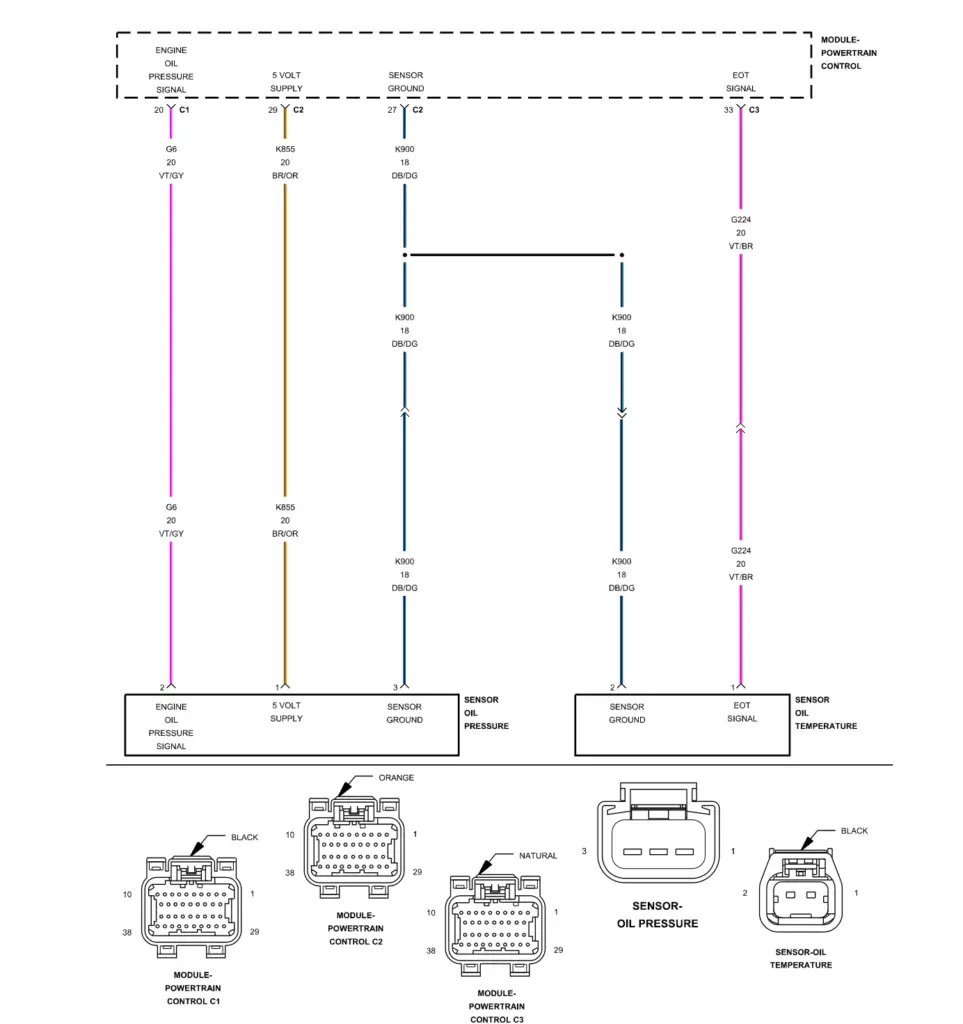P0523: Engine Oil Pressure Sensor/Switch High
Is your scanner showing P0523?
No worries. We'll show you what it means and how to deal with it.
P0523: Engine Oil Pressure Sensor/Switch High
OVERVIEWWhat Does The P0523 Code Mean?
The vehicle’s main computer called the Powertrain Control Module (PCM) is in control of many sensors, controls, and electronics in the vehicle. One of the sensors called the oil pressure sensor or sender detects the amount of (mechanical) oil pressure in the engine and relays that in the form of a voltage reading/value to the PCM.
In some vehicles, that oil pressure value is then relayed to a gauge in the instrument cluster to show the driver the oil pressure, other times that gauge is not there but there will be a warning light if there is a problem.
This specific P0523 engine code is triggered when the PCM sees too high of a value in the engine oil pressure sender/sensor. The oil pressure sensor operates on a 5 volt circuit. Generally this engine code will be triggered when the voltage is 4.6 or higher. With this trouble code, the cause may be mechanical or electrical, but is most likely to be electrical related. This code is related to these other oil pressure DTCs: P0520, P0521, P0522, and P0524.

P0523 wiring diagram
What Are The Symptoms Of The P0523 Code?
Symptoms of a P0523 DTC may include:
- Oil pressure gauge reading high
- Oil pressure indicator lamp illuminated
What Are The Potential Causes Of The P0523 Code?
Potential causes of a P0523 code include:
- High oil pressure (mechanical oil pump fault)
- High pressure due to obstruction/restriction in oil passage(s)
- Wrong engine oil used
- Faulty wiring or connection/connector in the oil pressure sender circuit
- Faulty oil pressure sender/sensor
How Can You Fix The P0523 Code?
Step 1
It’s a good idea to check for technical service bulletins (TSBs) that may apply to your vehicle before going too far into diagnostics.
Step 2
As a vehicle owner/DIYer the first obvious thing to do is to check the oil level using the dipstick. You want to make sure the engine has the correct type and weight of oil and that it’s not too old and thick or sludged up.
Step 3
Next, visually inspect the wiring and connectors at the oil pressure sending unit. Look for broken or frayed wires, burnt spots, loose or exposed wiring, etc. Refer to a model specific resource for the location of the sender.
Step 4
A technician may start by performing a mechanical oil pressure test using a mechanical gauge and compare that reading with the value of the sensor as is being read by the PCM.
They would use an advanced scan tool to do this. If the sensor or wiring is faulty, the mechanical gauge test will give the mechanic or technician an immediate sign of that. If you are DIY’ing this job that is the next step too.
Step 5
Now if you have ruled out that there is an actual problem with oil pressure, the problem lies either within the sensor or the wiring/connectors.
Use a digital volt ohm meter (DVOM) to check the sensor itself, and if it does not meet manufacturers specifications you should replace it. Also, check the voltage going to the oil pressure sensor, making sure it’s getting 5 volts. Replacing the sensor/sender or fixing wiring issues will be the most likely repair for this code.
If it checks out OK, test the wiring and connectors from the sensor to the PCM. Verify there are no breaks in the wiring due to chafing, pinching, etc. Make sure the electrical connectors are tight and corrosion free.
Recommended Parts
Below are some recommended auto parts to help you address the trouble code affecting your vehicle and get it running smoothly again:
Note: During the purchasing process, please check carefully whether the part you want to buy fits your car!
Check This Video For Reference
Reference Sources
Diagnostic Trouble Code (DTC) Guide for P0523 – Ominitek Advanced Technologies, pages 114-115.









